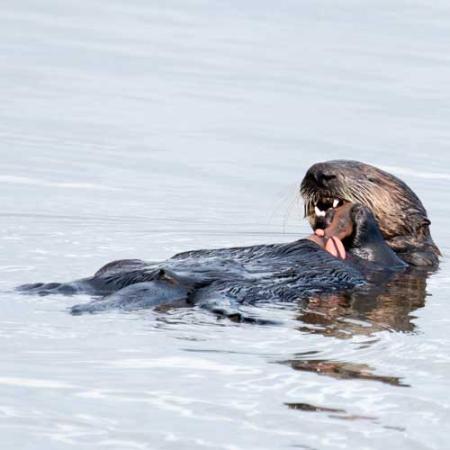Specifically, Haakanson is examining kayaks, boats, bags and parkas from the Burke’s collection. He also recently processed intestine taken from a Kodiak Brown Bear that was legally hunted on Kodiak Island—which has a thriving bear population. Over the last century, bear intestine and its meat have not been processed by outside hunters; it is discarded. Local bear guide, Paul Chervenak, brought the meat and intestine to Haakanson to teach these traditional practices for making raingear and bags.
The combination of referencing museum collections and reengineering traditional techniques has allowed Haakanson to create new pieces. University of Washington students and Burke visitors helped with the project, which provided a hands-on teaching opportunity for everyone to learn how traditional tools and materials are applied to today’s cultural practices.
By relearning how bear gut was traditionally used, Haakanson and Alutiiq community members are able to stitch together covers that wrap the frames of traditional model boats and make bags. These model boats are practice for creating a full-size, working Angyaaq, a traditional Alutiiq open boat that carried large groups of people and goods. These boats were seized by Russian settlers in the early 1800s, eventually leading to the loss of this practice entirely on Kodiak and the surrounding regions.
Referencing historic models from the Burke collection helped Haakanson and community members create both models and full-size Angyaat on Kodiak. The first new Angyaaq on Kodiak Island since the 1850s was built this year by local community members.




